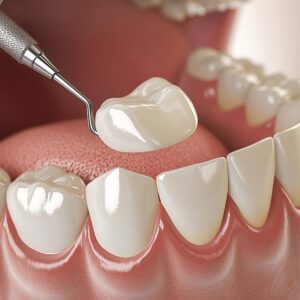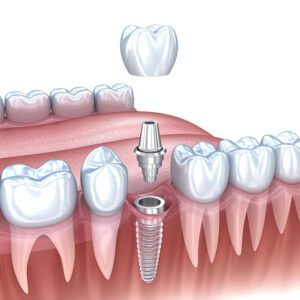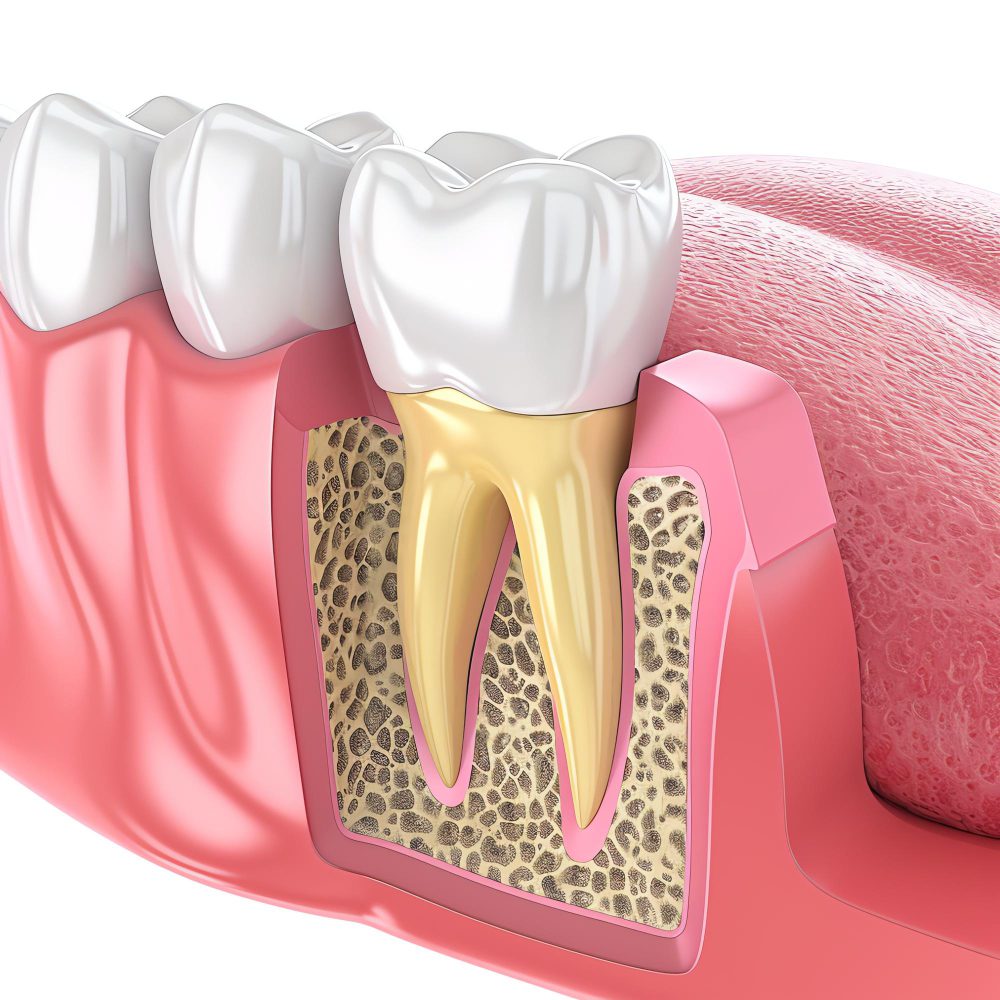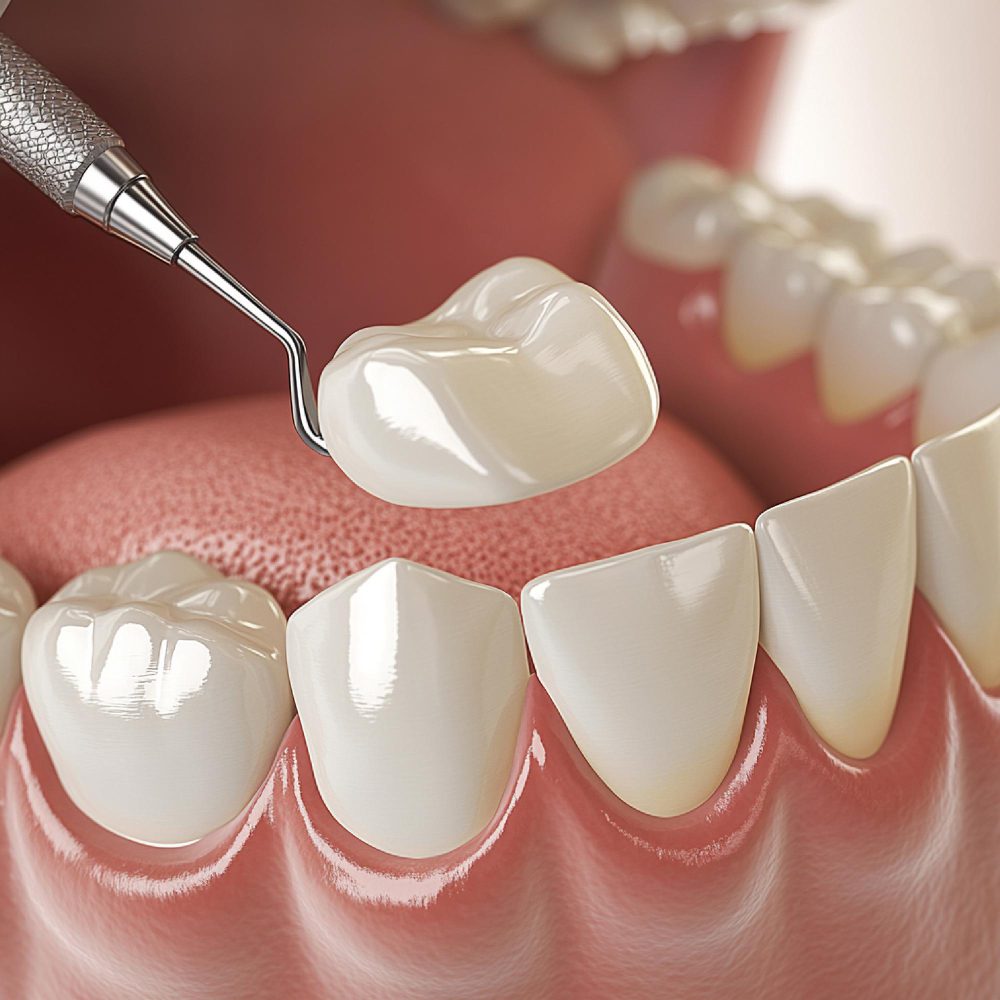Introduction: Bone is the Foundation of a Lasting Smile
Many people believe that once a tooth is extracted, the problem is over.
In reality, tooth loss marks the beginning of a silent process — jawbone resorption, which can compromise both dental health and facial appearance.
When a tooth is missing, the surrounding bone stops receiving the natural pressure it once got from chewing. Without this stimulation, bone cells begin to shrink and die off — a process known as jawbone loss.
Over time, this leads to:
- Gum recession
- Changes in facial shape (a “sunken” look)
- Difficulty placing implants later on
But the good news is: jawbone loss can be prevented with proper oral care, early intervention, and the right clinical techniques — especially at advanced centers like Dr. Abdurrahman Ozturk Dental Clinic in Istanbul, where prevention and regeneration go hand in hand.
What Is Jawbone Loss?
The jawbone, particularly the alveolar bone, is the part that holds and supports your teeth. When a tooth is lost or severely infected, the bone in that area begins to dissolve because it’s no longer being stimulated by chewing forces.
🔹 How the process happens:
- Loss of stimulation: No tooth root = no mechanical pressure on the bone.
- Bone resorption: The body reabsorbs unused bone cells.
- Soft tissue shrinkage: Gums begin to recede and collapse into the empty space.
- Structural changes: The face gradually loses support, leading to wrinkles and premature aging.
Common Causes and Risk Factors
Smoking
Smoking drastically reduces blood flow to the gums, slows healing, and damages bone-forming cells (osteoblasts).
➡ Smokers lose bone at 2–3 times the rate of non-smokers.
Teeth Grinding (Bruxism)
Continuous clenching or grinding at night creates excessive stress on the jawbone, causing micro-fractures that weaken the bone over time.
Poor Oral Hygiene
Neglecting oral hygiene allows bacterial plaque to build up, leading to periodontal (gum) disease — one of the top causes of bone loss around teeth.
Nutritional Deficiencies
Lack of calcium, vitamin D, and other minerals weakens bone density and slows down healing after extraction.
Systemic Conditions
Uncontrolled diabetes, osteoporosis, and long-term use of corticosteroids or anti-inflammatory medications can contribute to bone thinning and delayed regeneration.
Stages of Jawbone Loss After Extraction
- Within 1 week: The body begins to reabsorb bone near the extraction site.
- After 1 month: Bone width decreases by up to 25%.
- After 6 months: Nearly 50% of the bone volume is lost.
- After 1 year: Up to 70% of the original bone may be gone if the site is left untreated.
Conclusion: The sooner you replace a missing tooth, the better your chances of preserving the bone.
How to Prevent Jawbone Loss After Tooth Extraction
1. Immediate Dental Implants
Placing an implant immediately after extraction keeps the bone stimulated and prevents collapse.
The implant acts as an artificial tooth root, maintaining normal chewing forces.
With 3D digital planning, the procedure is precise, safe, and minimally invasive.
2. Socket Preservation (Bone Grafting)
If an implant cannot be placed immediately, your dentist can fill the socket with bone graft material to maintain bone volume and shape.
Over several months, this graft fuses with your natural bone, creating a strong foundation for future implants.
3. Sinus Lift (for Upper Jaw Cases)
When bone height is insufficient in the upper jaw, a sinus lift can gently raise the sinus membrane and add bone material.
This allows for stable implant placement even years after tooth loss.
4. Control Teeth Grinding
Wearing a night guard helps absorb excess pressure caused by bruxism and protects both teeth and jawbone.
5. Maintain Healthy Gums
Regular professional cleanings remove tartar and bacteria that cause inflammation and bone loss.
Schedule a check-up every 6 months to keep your gums and bone strong.
6. Balanced Nutrition
Eat foods rich in calcium, vitamin D, and omega-3 fatty acids (milk, fish, nuts).
Stay hydrated and limit sugary foods that promote gum infection
7. Quit Smoking
Quitting smoking dramatically improves blood circulation, accelerates healing, and strengthens bone density.
Studies show bone quality can improve by 20–30% within six months of quitting.
Signs You Might Be Losing Jawbone
- Receding gums or gaps between teeth
- Teeth that feel longer or slightly loose
- Pain or discomfort when chewing
- Facial sagging or “collapsed” look
- Difficulty fitting dentures or crowns
If you notice any of these, a 3D CBCT scan can detect early bone loss before it becomes severe.
Advanced Bone Preservation at Dr. Abdurrahman Ozturk Clinic – Istanbul
At Dr. Abdurrahman Ozturk Dental Clinic, advanced technology meets surgical expertise to restore and protect the jawbone.
The clinic is internationally recognized for complex bone regeneration and implantology.
1. Computer-Guided Implant Surgery
Using 3D CBCT imaging and digital mapping, implants are positioned with millimetric precision to maximize existing bone and minimize trauma.
2. PRF & PRP Therapy
Platelet-Rich Fibrin (PRF) derived from the patient’s blood accelerates tissue healing and stimulates bone formation naturally.
3. Digital Diagnostics
High-resolution scans provide detailed evaluation of bone density before any procedure, ensuring long-term implant stability.
4. Laser-Assisted Gum Therapy
Dental lasers disinfect deep pockets, enhance blood flow, and promote faster bone cell regeneration.
5. Bone Regeneration Techniques
Modern barrier membranes (GBR / GTR) protect bone grafts and allow new bone to grow without interference from soft tissue.
At Dr. Ozturk’s clinic, patients from around the world benefit from these advanced solutions to restore both function and facial harmony — achieving smiles that look and feel completely natural.
Daily Habits to Keep Your Jawbone Healthy
- Brush twice daily with a soft toothbrush and fluoride toothpaste.
- Use interdental floss or a water flosser to clean between teeth.
- Eat calcium-rich, low-sugar foods.
- Avoid chewing very hard objects.
- Treat gum inflammation promptly — don’t wait for pain.
- Replace missing teeth quickly to prevent bone collapse.
The Aesthetic and Emotional Impact of Bone Loss
Bone loss doesn’t just affect your oral health — it alters your appearance and self-confidence.
As the bone resorbs, the face loses support, lips become thinner, and wrinkles deepen.
By restoring bone volume through regenerative dentistry, patients often regain both facial youthfulness and self-esteem.
Conclusion: Strong Bone, Strong Smile
Jawbone preservation is not only a medical concern — it’s an investment in your long-term health and appearance.
Every day that passes after extraction without replacement leads to further bone loss, making future restoration harder.
Thanks to modern regenerative dentistry and innovations like guided implants, bone grafting, and PRF therapy, you can now rebuild what was lost safely and predictably.
At Dr. Abdurrahman Ozturk Clinic in Istanbul, patients receive comprehensive, science-based care that combines function, aesthetics, and prevention — ensuring that every smile rests on a solid foundation.
Healthy bone is the root of every confident smile — protect it before you lose it 🌿













One Response